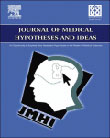Antiangiogenic effect of silicate nanoparticles on corneal neo-vascularisation induced by vascular endothelial growth factor ☆
Author(s):
Abstract:
Corneal neo-vascularisation (NV) is a major sight-threatening condition and is caused by infections, degenerative disorders, inflammation and long-time contact lens wear. Corneal NV occurs when the balance between angiogenic and antiangiogenic factors is tipped towards angiogenic molecules. The abnormal vessels may decrease corneal clarity and vision, lead to inflammation and corneal scarring and worsen the prognosis of penetrating keratoplasty if needed.There is no definite therapeutic approach for cornea NV. Medical and surgical therapies used to reduce corneal NV include corticosteroids and non-steroidal anti-inflammatory agents, laser photocoagulation and needle diathermy. Many of these therapies not only have demonstrated limited success but also have associated adverse effects. Therefore, it is very necessary to provide novel therapeutic approaches. Recently, anti-vascular endothelial growth factor (anti-VGEF) therapy has been introduced for the management of corneal NV.Herein, we hypothesise the use of silicate nanoparticles (SiNPs) as a novel treatment for corneal NV. The penetration rate of SiNPs into the cornea is attributed to the size of nanoparticles. Therefore, different sizes of SiNPs (20–50 nm) would be prepared and loaded onto the tissue to determine corneal permeability towards them. In addition, SiNPs would be administered into the eye by topical, subconjunctival and corneal intrastromal injection and accumulate in newly formed vessels. This hypothesis has been developed by emphasising on the synthesis of SiNPs, characterisation of size-dependent properties and surface modification for the preparation of homogeneous nanocomposites, generated by a reverse micro-emulsion method. As the importance of concentration, shape and/or size of SiNPs could be key factors exerting their antiangiogenic effects, we suggest using 20–30-nm SiNPs to enhance their ability to penetrate into the corneal epithelium. We hypothesise that topical, subconjunctival and corneal intrastromal injections of SiNPs may effectively inhibit and treat corneal NV. Controlled experimental studies on rabbits are needed to test whether SiNPs are able to effectively inhibit VEGF-induced angiogenesis in every segment of the eye including anterior, middle (ciliary body and trabecular mesh work) and posterior segments.
Language:
English
Published:
Journal of Medical Hypotheses and Ideas, Volume:8 Issue: 1, 2014
Pages:
14 to 20
magiran.com/p1237128
دانلود و مطالعه متن این مقاله با یکی از روشهای زیر امکان پذیر است:
اشتراک شخصی
با عضویت و پرداخت آنلاین حق اشتراک یکساله به مبلغ 1,390,000ريال میتوانید 70 عنوان مطلب دانلود کنید!
اشتراک سازمانی
به کتابخانه دانشگاه یا محل کار خود پیشنهاد کنید تا اشتراک سازمانی این پایگاه را برای دسترسی نامحدود همه کاربران به متن مطالب تهیه نمایند!
توجه!
- حق عضویت دریافتی صرف حمایت از نشریات عضو و نگهداری، تکمیل و توسعه مگیران میشود.
- پرداخت حق اشتراک و دانلود مقالات اجازه بازنشر آن در سایر رسانههای چاپی و دیجیتال را به کاربر نمیدهد.
In order to view content subscription is required
Personal subscription
Subscribe magiran.com for 70 € euros via PayPal and download 70 articles during a year.
Organization subscription
Please contact us to subscribe your university or library for unlimited access!


